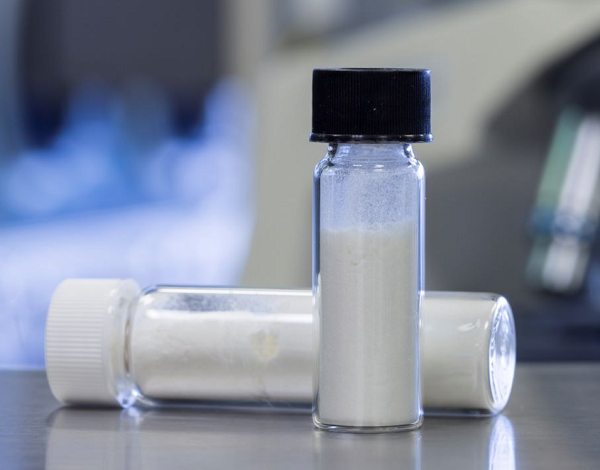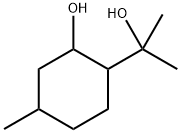p-Menthane-3,8-diol: Production and Percutaneous Absorption
Mar 25,2024
General Description
p-Menthane-3,8-diol, a natural alternative to DEET in mosquito repellents, is highly regarded for its exceptional repellent properties. Its production has been refined with the use of biosourced ammonium salts as catalysts, resulting in improved conversions and selectivities. Notably, this process exhibits outstanding sustainability and superior green metrics compared to traditional methods. The synthesized p-Menthane-3,8-diol showcases comparable or even heightened repellency efficacy when compared to the pure compound. Furthermore, studies on percutaneous absorption highlight minimal systemic uptake, underlining its safe application. Overall, p-Menthane-3,8-diol emerges as a powerful and environmentally friendly solution for effective mosquito repellency, promising both efficacy and safety.

Figure 1. p-Menthane-3,8-diol
Production
In the realm of mosquito repellents, p-Menthane-3,8-diol is emerging as a natural and safer alternative to the synthetic standard, N,N-diethyl-m-toluamide, thanks to its excellent repellent properties. A study aimed to enhance the production process of p-Menthane-3,8-diol from citronellal, focusing on greener conditions without compromising yield, while also developing a sustainable post-reaction approach. To achieve this, biosourced ammonium salts were investigated as catalysts for the carbonyl-ene reaction-hydration, which converts citronellal and citronellal-rich essential oils into p-Menthane-3,8-diol. The results demonstrated that ammonium salts exhibited superior conversions and selectivities towards p-Menthane-3,8-diol compared to previous methods, even at low catalytic loading and with rapid reaction rates. Importantly, the catalytic solution of ammonium salts could be directly reused up to six times without any loss of activity, showcasing its efficiency and cost-effectiveness. The sustainability of the methodology was assessed using a comprehensive approach, which yielded excellent green metrics. These included a PMI (Process Mass Intensity) of 6, TON (Turnover Number) of 708, TOF (Turnover Frequency) of 17, and an E-factor (Environmental Factor) of 0.68, surpassing other existing processes in terms of environmental impact. Furthermore, the repellent activities of PMD synthesized from citronellal and essential oils were evaluated against Aedes albopictus, one of the most invasive mosquito species worldwide. The results indicated that it derived from both sources exhibited comparable or even greater repellency than pure p-Menthane-3,8-diol, further confirming its efficacy as a mosquito repellent. Overall, this study presents an efficient and greener production process for p-Menthane-3,8-diol, utilizing biosourced ammonium salts as catalysts. With its natural origin, improved selectivity, and potent repellent properties, p-Menthane-3,8-diol has the potential to contribute significantly to the development of safer and more sustainable mosquito repellents. 1
Percutaneous Absorption
In a study focused on the percutaneous absorption of the insect repellent p-Menthane-3,8-diol, which is a key ingredient in the commercial product "OFF! Botanicals" lotion, researchers aimed to assess the potential systemic absorption of p-Menthane-3,8-diol in humans. The study utilized carbon-14-labeled p-Menthane-3,8-diol applied in both lotion and ethanol solution forms on excised pig skin in an in vitro flow-through test system designed to mimic human skin absorption. Results indicated that after 24 hours of application, approximately 3.5 +/- 0.8% of the applied dose of p-Menthane-3,8-diol in the lotion and 3.0 +/- 1.2% of the dose in the ethanol solution was absorbed by the pig skin. The majority of the applied it was found to evaporate from the skin surface, with 77 +/- 8% evaporation for the lotion and 87 +/- 1% for the ethanol solution, limiting the percutaneous absorption values. For comparison, the study also evaluated the absorption rates of other substances like piperonyl butoxide (PBO), N,N-diethyl-m-toluamide, and isododecane. The absorption rates of PBO, DEET, and p-Menthane-3,8-diol were higher when tested on excised rat skin compared to pig skin, indicating potential differences in absorption rates between species. Overall, the study provides valuable insights into the percutaneous absorption of p-Menthane-3,8-diol, highlighting its limited systemic absorption in pig skin models and emphasizing the importance of considering factors such as formulation and skin type when assessing dermal absorption of insect repellents. 2
Reference
1. Andrii S, Franck P, Claire M, Claude G. Efficient and Greener Process for the Production of p-Menthane-3,8-diols Using Biosourced Ammonium Salts as Catalysts. ACS Sustainable Chemistry & Engineering. 2023; 11(16): 6427-6434.
2. Reifenrath WG, Olson JJ, Vedula U, Osimitz TG. Percutaneous absorption of an insect repellent p-menthane-3,8-DIOL: a model for human dermal absorption. J Toxicol Environ Health A. 2009;72(13):796-806.
- Related articles
- Related Qustion
- p-Menthane-3,8-diol: mechanism of action, applications and safety Oct 16, 2023
p-Menthane-3,8-diol) is a natural insect repellent derived from lemon eucalyptus leaves, widely used to repel insects and protect against mosquito-borne diseases.
- Applications of p-Menthane-3,8-diol Dec 3, 2019
P-menthane-3,8-diol is a p-menthane monoterpenoid in which p-menthane carries hydroxy groups at C-3 and C-8. P-menthane-3,8-diol derives from a hydride of a p-menthane.
Salmeterol's mechanism involves debated factors like lipophilicity and receptor rebinding. It benefits asthma/COPD patients by providing long-lasting bronchodilation and symptom relief.....
Mar 25,2024APIBendamustine is in a class of medications called alkylating agents. It kills existing cancer cells and limits the growth of new cancer cells.....
Mar 25,2024APIp-Menthane-3,8-diol
42822-86-6You may like
p-Menthane-3,8-diol manufacturers
- P-Menthane-3, 8-Diol Pmd
-
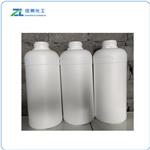
- $200.00 / 1kg
- 2024-04-25
- CAS:42822-86-6
- Min. Order: 1kg
- Purity: 99%
- Supply Ability: 20ton
- p-Menthane-3,8-diol
-
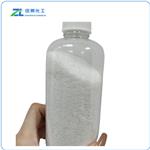
- $100.00 / 1kg
- 2024-04-25
- CAS:42822-86-6
- Min. Order: 1kg
- Purity: 99
- Supply Ability: 5000
- p-Menthane-3,8-diol
-
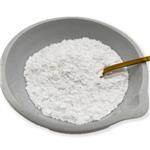
- $10.00 / 1kg
- 2024-04-02
- CAS:42822-86-6
- Min. Order: 1kg
- Purity: 99%
- Supply Ability: 5000 Metric Ton/Month




